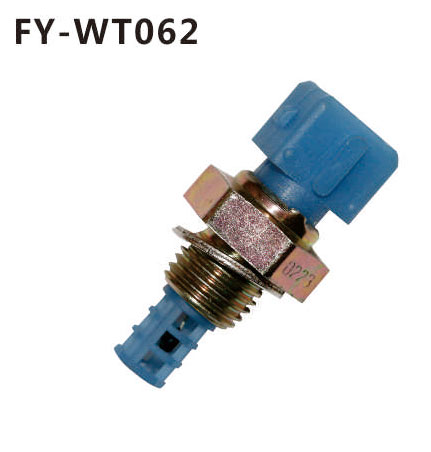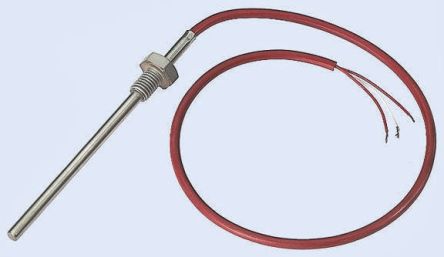Application status of sensor technology in automobiles

In the era of rapid development of electronic technology, the control system of automobiles has gradually turned to electronic control systems. The most important one of these electronic control systems is the sensor application technology. In the sensor market, traditional sensors are gradually being phased out. The current state of the art is an intelligent, multi-functional, miniaturized, integrated sensor, and this sensor will gradually become an indispensable part of automotive sensors.
Since the German Carl Mercedes developed the world's first car in 1885, the car has gradually become an indispensable means of transportation in people's lives. However, in today's era of rapid development of science and technology and progressive social progress, the control system of automobiles has gradually turned to electronic control systems, which are called electronic vehicles. The most important one of the control systems for such electronic vehicles is the sensor application technology. A high-end sensor will gradually become an essential part of the automotive control system.
1, the application status of sensor application technology in automobiles
An important technical feature of automotive development today is the increasing use of electronic control systems for the components that make up the car. But as long as it is the use of electronic control systems, the existence of sensors is essential, such as car GPS navigation, automatic transmissions, engines and so on. The vehicle uses sensors to accurately and real-time control and measure various useful information such as pressure, intake air volume, acceleration, position, vibration, speed, and temperature of the vehicle system. It can greatly improve the comfort of the car and play a key role in the safe driving of the car. Nowadays, the four sensors of pressure, intake air volume, speed and temperature are used to illustrate the application status of sensor application technology in automobiles.
1.1 Pressure sensor
During the driving process, many parts are subject to stress during work. The main function of the pressure sensor is to detect oil pressure, cylinder internal pressure, turbine engine boost ratio, atmospheric pressure, cylinder negative pressure and so on. The main purpose of detecting these is to ensure the safe and normal driving of the car. The pressure sensor converts the pressure of the liquid or gas into an electrical signal that is passed to the ECU for easy control and monitoring. In automotive electronic control systems, pressure sensors come in two forms: Piezoresistive type - resistance strain gauge pressure sensor and semiconductor piezoresistive effect pressure sensor. At higher pressures, resistance strain gauge pressure sensors are generally used. In contrast, when the pressure is low, a semiconductor piezoresistive effect pressure sensor is generally used. In addition to these two types, the car also uses SAW (surface elastic wave type), LVDT (differential transformer type), and capacitive type when using the pressure sensor.
SAW pressure sensors are characterized by digital output, high resolution, high sensitivity, high reliability, low power consumption, light weight and small size. It is stable under high temperature conditions and can detect the pressure of the car's suction valve. It is an ideal pressure sensor.
The LVDT pressure sensor is characterized by easy digital output, large output, and poor anti-interference.
Capacitive pressure sensors are characterized by good environmental adaptability, good dynamic response characteristics, and high input energy. It is capable of detecting air pressure, hydraulic pressure, and negative pressure. The measurement range is 20-100 kPa.
1.2 the intake air amount sensor
In automotive electronic control system devices, the intake air sensor is used to detect the amount of air that the engine can draw in. The main parameters determined by the engine basic ignition advance angle and the basic fuel amount are the engine speed and the intake air amount.
The amount of intake air has a large impact on the operation of the engine. When the vehicle uses the intake air sensor, there are Karman vortex, hot wire, hot film, vane, etc., and the intake air sensor is generally installed between the throttle body and the air cleaner. The methods that the engine can use to detect the amount of air intake are the speed density method, the mass flow method, and the like. The method that is often used today is quality retention. The principle of this method is to measure the amount of air taken in directly using an air flow meter. The calculated criterion is the ratio of the measured air flow to the upper engine speed.
1.3 Speed sensor
The most representative of the sensors is the speed sensor, which detects the speed of the wheel and the crankshaft speed of the engine, from which the speed of the car can be derived. The main parameters determined by the engine basic ignition advance angle and the basic fuel amount are the engine speed and the intake air amount. The speed will have a big impact on the operation of the engine. At present, when the car uses the speed sensor, there are semiconductor magnetic transistor type, optical type, reed switch type, Hall effect type, magnetoresistive type, alternator type and the like. There are many types of speed sensors, such as the rotation of the sensitive power transmission shaft, the rotation of the sensitive differential driven shaft, and the rotation of the sensitive wheel. When the vehicle speed is greater than 100km/h, the general measurement method will have a large error. At this time, it is necessary to use a non-contact photoelectric speed sensor, which has high precision and small error.
1.4 Temperature sensor
The role of the temperature sensor is to detect the catalytic temperature, fuel temperature, cooling water temperature, suction gas temperature, engine temperature, and the like. When a car uses a temperature sensor, it has three types: a thermocouple resistance type, a thermistor type, and a wire wound resistance type. The thermocouple resistance temperature sensor is characterized by a wide range of temperature measurement and high precision, but the cold end treatment is used together with a magnifying glass. The thermistor temperature sensor is characterized by good response characteristics and high sensitivity, but the temperature is relatively low and the linearity is poor. Wirewound resistance temperature sensors are characterized by high accuracy but poor response characteristics. Temperature sensors that have been put to practical use on the market include metal or semiconductor film air temperature sensors, ferrite temperature sensors, and thermistor temperature sensors.
The role of the temperature sensor is to detect the catalytic temperature, fuel temperature, cooling water temperature, suction gas temperature, engine temperature, and the like. When a car uses a temperature sensor, it has three types: a thermocouple resistance type, a thermistor type, and a wire wound resistance type. The thermocouple resistance temperature sensor is characterized by a wide range of temperature measurement and high precision, but the cold end treatment is used together with a magnifying glass. The thermistor temperature sensor is characterized by good response characteristics and high sensitivity, but the temperature is relatively low and the linearity is poor. Wirewound resistance temperature sensors are characterized by high accuracy but poor response characteristics. Temperature sensors that have been put to practical use on the market include metal or semiconductor film air temperature sensors, ferrite temperature sensors, and thermistor temperature sensors.






